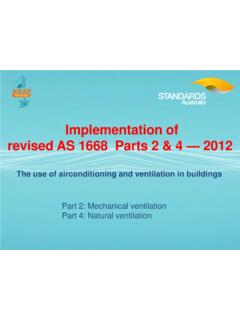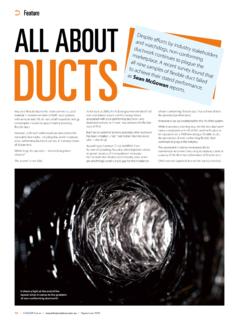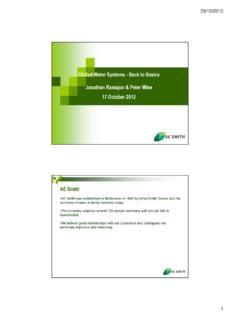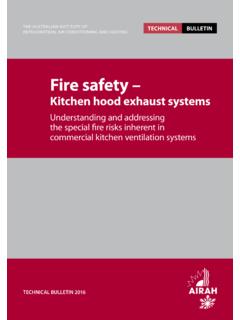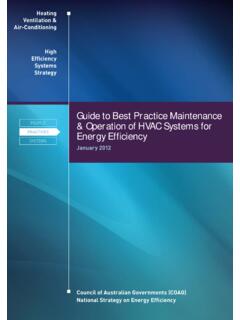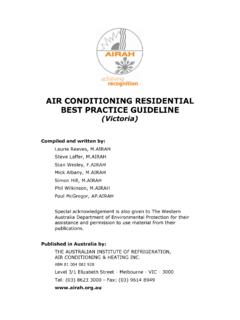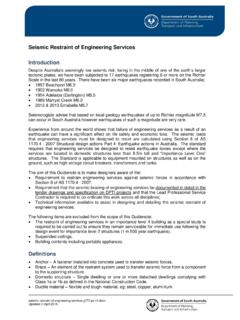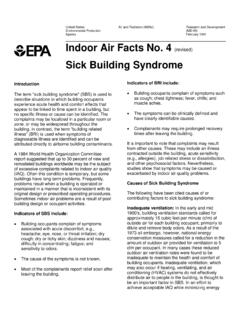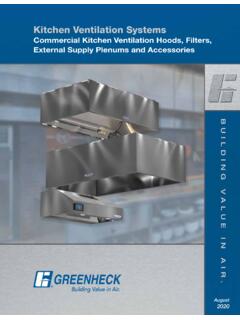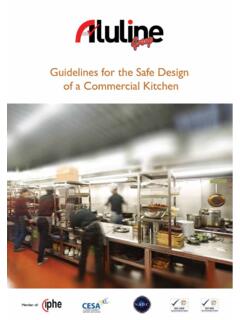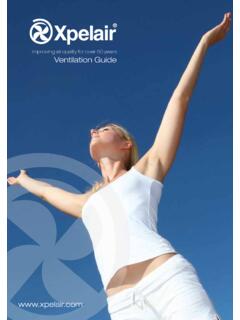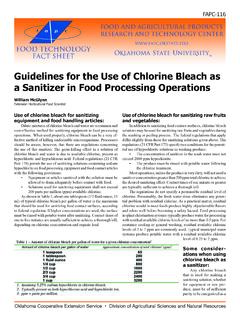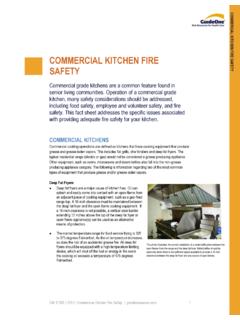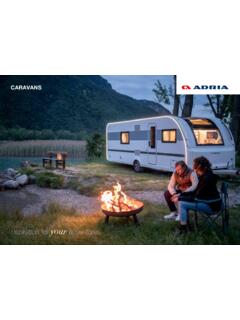Transcription of The Use of Ventilation and Air Fire and Smoke Control in ...
1 Australian/New Zealand Standard The use of Ventilation and air conditioning in buildings - Part 1: Fire and Smoke Control in buildings UPDATED AS/NZS :2015 Page 1 of 1 Updated March 2016 What is the scope of this Standard? The objective of AS/NZS :2015 is to provide standardized minimum requirements for mechanical air-handling and mechanical Smoke Control systems for use by designers, installers, inspectors and regulators of these systems . This Standard does not include the requirements for the maintenance of Smoke Control systems. Victorian Plumbing Regulatory Framework Where is AS/NZS :2015 called up?
2 National Construction Code (NCC) 2016 Volume 1 - Class 2 to Class 9 Buildings (BCA) Volume 3 - Plumbing Code of Australia (PCA) NOTE: Practitioners should be aware that they are required by the PCA to comply with relevant sections in the NCC Volumes 1 and 2 when undertaking mechanical, Ventilation and air-conditioning work. Volume 1 - Class 2 to Class 9 Buildings (BCA) Specification Schedule of referenced documents. Part C2 Compartmentation and Separation - Separation of equipment Part C3 Protection of Openings - Openings for service installations Specification Smoke -proof walls in healthcare and aged care Buildings 4 Doorways in Smoke -proof walls Section D Access and Egress - Travel via fire-isolated exits Specification Fire and Control Centres 10 Ventilation and power supply for a fire Control room Part E2 Smoke Hazard Management General Requirements Specification Smoke Exhaust Systems 7 Control Part F4 Light and Ventilation - Kitchen local exhaust
3 Ventilation Specification Fire and Smoke Control systems in buildings containing atriums General Requirements. Volume 3 - Plumbing Code of Australia (PCA) Part : Schedule of referenced documents. AS/NZS :2015 is automatically adopted under Plumbing Regulations 2008, Regulation 9 (2) Modifications to the PCA1. Part E1 Heating, Ventilation and Air Conditioning Systems Deemed-to-Satisfy Provisions General Requirements 1 The Victorian Plumbing Regulations 2008 can be found on the VBA website: National Construction Code (NCC) Referenced Standards AS/NZS :2015 The use of Ventilation and air conditioning in buildings Building Act 1993 Plumbing Regulations 2008 Updated March 2016 Page 2 of 6 AS/NZS : Fire and Smoke Control in buildings Publication Date 14 December 2015 (supersedes AS/NZS.)
4 1998) Class of work affected Mechanical Services Fire Protection Work Changes and Impact The Standards Australia Committee has updated AS/NZS Major changes from contained in the updated 2015 version include but are not limited to, the following: A hot layer Smoke Control arrangement has been added. The function of car park Ventilation systems has been revised. The requirements for detection and initiation of Smoke Control systems have been transferred to AS The requirements for construction and installation of fire dampers, Smoke dampers and air dampers have been transferred to AS 1682 series.
5 Improved diagrams and greater clarity of the mandatory requirements. Mandatory minimum levels of documentation (baseline data) to be prepared and remain available on site. NOTE: To avoid confusion over which Clause is discussed below, the version of AS/NZS that each Clause is taken from is indicated in brackets: (1998) or (2015). SECTION 1 GENERAL Definitions (2015) Several new definitions have been added to this section to reflect the changes in the rest of the Standards. SECTION 2 AIR-HANDLING SYSTEMS GENERAL REQUIREMENTS Clause Interaction (2015) It is now an explicit requirement that no fire or Smoke Control system can be allowed to adversely impact on the performance of another required fire and Smoke Control system.
6 Clause Air Dampers (1998) This Clause has been rewritten and simplified. All types of dampers must now comply with AS 1682 (the revised damper Standard). The requirements for combinations of dampers and response times for motorised dampers are retained. There is no longer a requirement for latching non-return discharge dampers. Clause Combustibility and Temperature of Fusion (2015) This Clause has been rewritten and simplified. Concessions now apply to all forms of insulation where the insulation is: Faced with sheet metal (perforated or non-perforated), and having a temperature of fusion more than 500 C.
7 Concessions also apply to Duct Sealants if they comply with the requirements of AS/NZS :2012 and to acoustic attenuators not longer than 3m. Clause Electrical Installation (2015) All electrical components must now comply with AS/NZS 3000 in addition to all relevant regulations. Clause Support and Isolation (2015) In a new clause, practitioners are reminded of the requirement to design Smoke Control systems to resist the effects of fire or earthquake, with systems remaining capable during these events SECTION 3 FIRE PROTECTION OF OPENINGS Clause General Requirements (2015) The requirements for the maintenance of a building s Fire Resistance Levels (FRL) have been clarified.
8 All openings are required to be protected with fire dampers and the FRL of the building maintained according the following: Updated March 2016 Page 3 of 6 AS/NZS : Fire and Smoke Control in buildings a) The structural adequacy component of the FRL for the building element shall be maintained by the building element, independent of the fire damper. b) The integrity component of the FRL for the building element shall be maintained by providing a fire damper that has an integrity performance equal to that required of the building element.
9 C) The insulation component of the FRL for the building element shall comply with Clause This highlights the need for coordination with the building trade and the fact that some dampers provide no insulation performance. Clause Insulation (2015) Previous clauses relating to wall and floor dampers have been reworked into insulation and overall method of protection requirements (Clause ). Insulation requirements have been refined. A significant change is the requirement for a minimum of 2m sheetmetal ductwork connected to wall mounted dampers that do not provide sufficient insulation performance for the wall s FRL.
10 Clause Exemptions (2015) This Clause has been added to clarify instances where fire dampers need not be installed to openings, or identify solutions to eliminate fire dampers from a design. The existing exemptions have been maintained with several additions: Where an a opening is protected with enclosing construction in accordance with Clause If an opening is protected by construction equivalent to a prototype test specimen in accordance with Clause If the opening is located at the entry to a shaft where the FRL of the shaft is maintained through all other fire compartments traversed by that shaft , a clause that effectively permits an opening to a fire rated shaft from any single fire compartment in a building.
